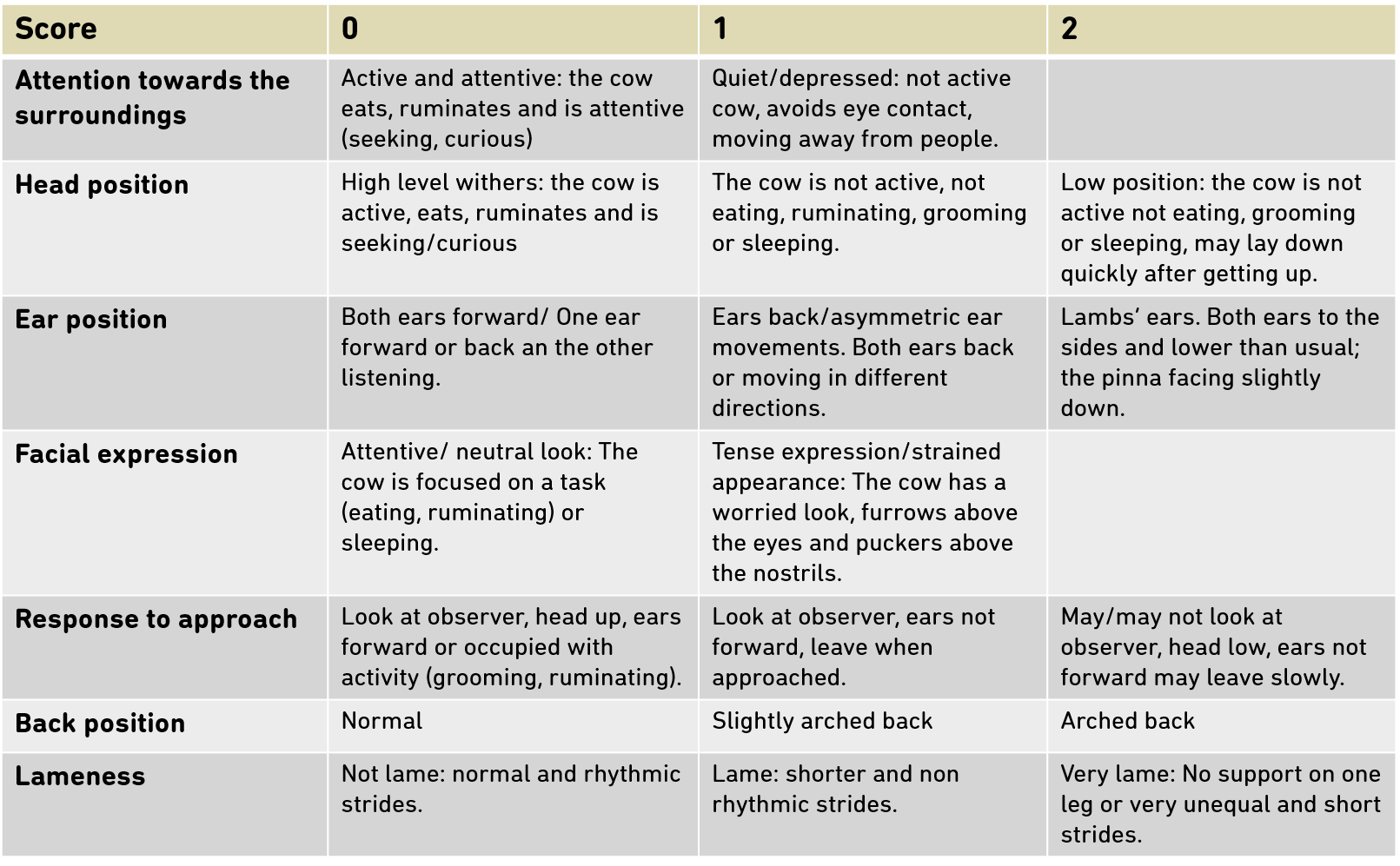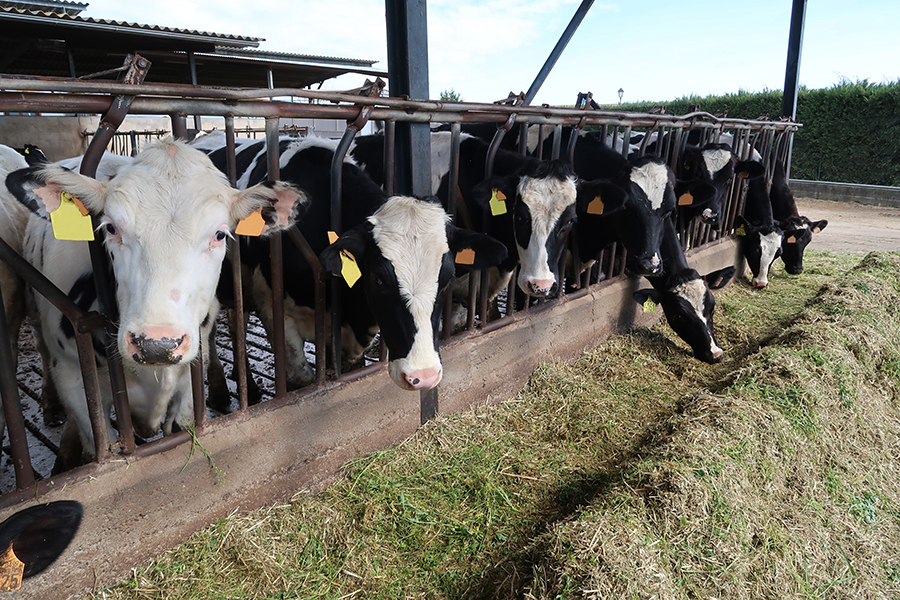View products for cattle
E-learning platform for vets specialised in cattle
Learn more about Respiratory diseases in cattle
Learn more about Metabolic diseases in cattle
Learn more about Transition period in cattle
PAIN MANAGEMENT IN CATTLE
Pain compromises the welfare of the animals and reduces their performance (milk yield or growth rate), and thereby reduces farm income.(1) The prerequisite for being able to alleviate pain is to be able to recognize it.(2)
Cattle are often described as stoic animals which may be the main reason why pain evaluation in cattle is difficult. Even though, there are no evidences suggesting that cows are less sensitive to pain than other mammals.(2) This, makes the identification of injury or pain difficult until a condition is at an advanced stage.(3)
For this reason, some studies have been carried out to develop new pain evaluation methods for the early recognition of the pain signs. These tools, such as ‘The cow pain scale’, analyse some changes in the animals’ behaviour with the aim of stablishing an earlier, more timely, and efficient therapy (Table 1).
Some well recognized pain manifestations are tooth grinding, vocalizing, head pressing, or rarely, colic behaviour. These behaviours will most often be noticed in dairy cattle, but it is important to realize that these are all pain behaviours indicating severe pain. It is necessary to also be aware of more subtle pain behaviours in order to prevent cows with low to moderate pain proceeding to experience prolonged periods of suffering. Most severe cases become difficult to treat and have a poor prognosis for the future.(4)

There is a growing awareness of the importance of the use of NSAIDs in cattle, aimed to reduce inflammation, to alleviate pain, and to mediate endotoxin-induced effects.(1) The anti-inflammatory therapy accelerates healing rates and restores animal performance by optimising animal welfare and by reducing stress.(3)

Animal diseases such as acute mastitis, metritis, lameness, fractures, septic arthritis and peritonitis are extremely painful and thus, a treatment with NSAIDs is essential even before the diagnostic has been confirmed.(1,5)
Additionally, once the antimicrobial therapy has started, the addition of NSAIDs accelerates the bacteriological cure, helping to reduce the use of antibiotics and therefore contributing to their prudent use.(6,7)
LIVISTO is fully committed to the well-being of animals, by providing complete solutions for pain management and for the treatment of animal diseases. Check with your distributor which LIVISTO products are approved in your area.
BIBLIOGRAPHY
- 1. Breen, J. The importance of non-steroideal anti-inflammatory drugs (NSAIDs) in mastitis therapeutics. Livest. J. 22, 182–185 (2017).
- 2. Gleerup, K. B., Andersen, P. H., Munksgaard, L. & Forkman, B. Pain evaluation in dairy cattle. Appl. Anim. Behav. Sci. 171, 25–32 (2015).
- 3. O’Callaghan, K. Lameness and associated pain in cattle - Challenging traditional perceptions. In Pract. 24, 212–219 (2002).
- 4. Gleerup, K. B. Identifying Pain Behaviors in Dairy Cattle Functions and Effects of Pain. in 29, 231–239 (2017).
- 5. Stojkov, J., von Keyserlingk, M. A. G., Marchant-Forde, J. N. & Weary, D. M. Assessment of visceral pain associated with metritis in dairy cows. J. Dairy Sci. 98, 5352–5361 (2015).
- 6. Mansion-de Vries, E. M. et al. Comparison of an evidence-based and a conventional mastitis therapy concept with regard to cure rates and antibiotic usage. Milk Sci. Int. 27–32 (2016).
- 7. McDougall, S. et al. Addition of meloxicam to the treatment of clinical mastitis improves subsequent reproductive performance. J. Dairy Sci. 99, 2026–2042 (2016).
